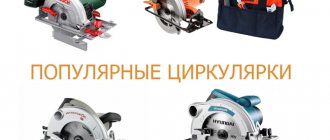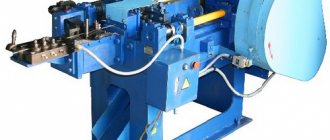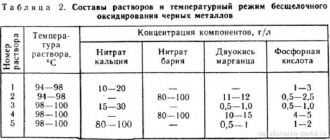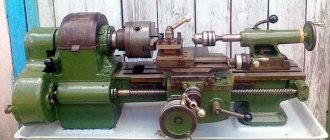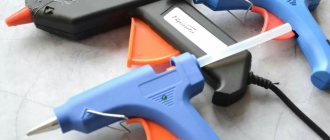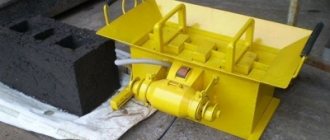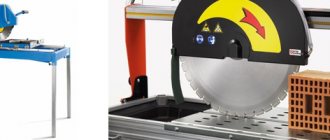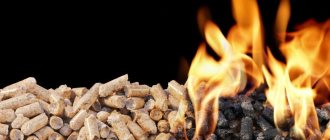Entrepreneurs in areas with forests and timber harvesting rightly believe that woodworking and carpentry can create a stable income as a business. Individual developers expect significant cost savings by purchasing small-sized, affordable woodworking equipment, for example, a machine for making lining.
The decision is quite reasonable, considering that processing wood into joinery increases its cost at least twice, and the use of wooden lining in cladding work is becoming an increasingly relevant and popular way of finishing housing and auxiliary buildings.
A machine for the production of joinery can be purchased, assembled from components for the planned volumes, and even manufactured independently.
Before you start selecting equipment or manufacturing it, you need a general understanding of the issue using the example of the industrial production of cladding boards.
Technology of industrial production of lining
The process of manufacturing lining on an industrial scale involves a number of preparatory and technological operations, a properly selected set of equipment, warehousing and storage of raw materials and products, and compliance with safety regulations:
- The wood (wisps) is cut into edged boards with a thickness of 15 to 25 mm and a width of up to 150 mm - the size is determined by the intended type of lining. Sawing is carried out on disk or band sawmills;
- Boards are brought to standard humidity in drying units, chambers and rooms in various ways. Drying is necessary to minimize waste, risks of warping and cracking of lumber;
- Upon reaching the required moisture content, the boards are sorted by quality; for the production of lining, the material is selected of the second or higher grade;
- A lining machine involves processing boards simultaneously in four planes to create a given profile. Sampling and cutting of wood occurs using cutters and knives of various shapes and sizes, usually replaceable and allowing different profile configurations to be varied;
- Finished products are inspected and then refined: large knots and wood defects are cut out. At the same time, the length of the lamella decreases, but its grade increases, and hence the selling price.
Where to begin
To create a profitable business, it is important to study the construction market in the region and how high the demand for wood cladding is. To make a preliminary calculation of the cost of goods, you need to know the current prices on the market.
When drawing up a business plan, it is necessary to analyze the number of woodworking shops in the area. If there are enough of them, then another enterprise will not be able to provide itself with work. The cost of raw materials in this area must be low to ensure competitive prices.
The main raw material for the lining will be boards, the quality of which is regulated by GOST. Wood of different species is used for production (pine, larch, linden, alder and others).
Shop
A separate room is suitable for a woodworking workshop. It is better if the workshop is located away from residential areas, since sawing wood creates a lot of noise and dust. Strict Sanitary Service requirements apply to this industry and will have to be followed. Basic standards and operating rules are specified in SanPin 2.2.3.1385-03. Fire safety requirements must also be met.
The second important issue is the electrical wiring in the room. Sawing machines have high power and place a large load on the wires. Wood is a very flammable material, so you should not skimp on wiring and power supplies; they must be in perfect condition.
In addition to the machines, the workshop should have a drying chamber. And a separate warehouse for finished products.
Raw materials for lining
Types of lining
Wooden lining is manufactured with the following types of profile:
- The “Standard” profile is basic, its cross-section resembles a trapezoid. There are no gaps or cracks on the surface of the sheathed wall, but small depressions are visible at the joints of the parts, which are formed due to the beveled corners of the planks. Causes a lot of complaints due to deformation after assembly.
- “Europrofile or Eurolining” are manufactured according to the Western European standard DIN 68126/86. This type of profile is subject to strict requirements for wood moisture content. The panels are equipped with ventilation holes. Despite the higher price compared to standard cladding, it is widely used for finishing.
Eurolining is produced in the following types:
- the “Calm” profile has more rounded details and due to this, the transition at the joints of the lining looks smoother. The profile is thickened to 25 mm. Used for cladding building facades when it is necessary to create an imitation of timber;
- "Blockhouse" has a completely rounded front part. Thanks to this, after installation the wall looks like it was assembled from logs;
- "Landhouse" is one of the most expensive types of profile. Made with a pattern or embossed effect on the front side;
- The Softline profile is characterized by the absence of corners and is suitable for saunas;
- “American” is distinguished by a beveled profile of parts. An imitation of natural wood siding is created.
All lining is made from one batch and goes through the same machine. Completely finished boards are sorted depending on the presence of knots, cracks and other defects.
Classes (grades) of lining:
- extra - perfectly smooth and even surface;
- “A” or grade 1 - slight surface roughness is acceptable. There is 1 knot per 1 linear meter. There may be small cracks and resin pockets;
- “B” or grade 2 - many knots, 2 of which may fall out. The presence of cracks and several wormholes is acceptable. This variety is suitable for dyeing;
- “C” or grade 3 - low quality wood, suitable for rough work and cladding of technical rooms.
Raw materials
One of the important points in the work of a woodworking shop is control during the acceptance of raw materials. To supply quality products to the market, it is important to find a trusted material supplier. The more careful control over the quality of raw materials, the higher the grade and price of the finished lining.
Lining is made from almost all types of wood. Depending on the type of wood, the following varieties are divided:
- conifers (pine, spruce, larch, cedar);
- deciduous (linden, alder, beech and others).
Coniferous species are characterized by the presence of essential oils and resins, therefore they are used more often for external decoration.
Hardwood is mainly used for interior decoration, including baths and saunas. Such materials are less durable, but have low thermal conductivity, which allows them to be used in very hot rooms.
Conditions and requirements for the production of lining in small volumes
Based on the principle of a large-scale industrial enterprise, mini-productions of facing boards are also created.
Basic conditions:
- The production premises must be separate and comply with sanitary standards;
- The noise of the machines should be minimal, especially if the mini-workshop is located in a building with nearby people living;
- Wood dust is an increased source of ignition, which must be taken into account when organizing production;
Depending on the power of the equipment and machines, unforeseen loads on the electrical wiring may occur; the wiring must be calculated with a reserve.
Whatever machine is used for making lining, the basic requirements must be met:
- The board in production should only be edged, the dimensions of the thickness and width of the boards should be the same;
- In addition to the main machine, it is necessary to have a double-sided surface planer or, at a minimum, a jointer in the equipment set;
- Be sure to pass the wide planes of all boards through a surface planer on both sides;
- The humidity of the blank board should not exceed 24%, otherwise it must be dried under a ventilated canopy.
Slat sizes
On your own machine you have the ability to produce lining of individual sizes, reducing the number of scraps during installation. Typical length values are within 6 m (minimum 0.3 m, increments of increasing values - 0.1 m).
The width of the step along the vertical joint of the sheet is 0.15 m. A wide wood sheet is more prone to deformation and warping. Narrow elements behave more stable.
The thickness varies: internal finishing is limited to 1.2 cm, external installation increases to 2.5 cm.
The ability to carry out individual orders for lining of the desired size, profile, material (for example, rosewood) quickly pays for the machine for production at home.
Difficult work on a simple machine
Various recommendations for novice carpenters and machine operators claim that making lining or other wood products is simple and accessible to any beginner.
In practice, it is somewhat different: carpentry work is complex by definition, and with the use of machines and special tools it is also dangerous. First, you need to study, at least in a minimal way, the theory of wood processing: direction of fibers, types of joints, grade, hardness, curl, defects and defects.
The simpler the woodworking machine for lining, the more user intervention is required to configure it and set parameters.
A general familiarization with the operation of the machine must be completed by first observing the work of the master and recording even minor nuances of installation and adjustment of knives, cutters, fasteners and protective devices.
Preparation of the workplace
All the time, attention is paid to the work of the saw, so nothing should interfere with the process underfoot or on the table with workpieces. Finished products are neatly stacked on the opposite side of the workpieces. The simplest version of the lining machine is not intended for independent work with long workpieces.
It is very difficult to independently hold the board as it exits the cutter while pressing tightly against the ruler; there is a real danger of injury due to a violation of linearity at the ends and the need for additional effort.
Machine equipment
It is possible to assemble a lining machine from individual components only if you have the necessary technical skills. Components of the machine for home use:
- Bed: is a heavy frame with high stability and the center of gravity located at the bottom of the frame;
- Table for supporting lining made of solid steel plate with holes for cutters and spindles;
- Motor up to 5 kW with transmission from 5000 rpm to improve planing cleanliness;
- Pressure rollers to hold the workpiece in the required planes;
- Knife shaft;
- Protective cover for rotating parts;
- Switching unit with external button;
- Grounding and protective metal hose for electrical wiring.
Machines: popularity and availability
For the production of cladding boards in small volumes, the most popular, easy to use and affordable machine is considered to be a four-sided machine for making lining.
It can be used to produce high-quality eurolining with complete product readiness in one pass. In addition to lining, it is possible to produce skirting boards and platbands.
Basic selection options:
- Workpiece feeding speed;
- Machine weight;
- Possible type of lining section;
- Power;
- Number of spindles.
Milling cutter - appearance, application, features
It is difficult to come up with a more perfect tool for wood shaping. A milling cutter is a fairly easy-to-use tool, which is a washer (with several blades of a certain shape) with a shank that is clamped into a machine chuck. The number of blades varies from 2 to 6, depending on the area of application of the tool, the material it processes, and the power of the power plant.
A standard cutter washer has 2 knives that remove material from the board. A durable shank with a diameter of 8-12 mm ensures transmission of torque to the knives. The board processing process is quite simple, but seriously penalizes for mistakes. It is quite easy to spoil a board, not only at the stage of removing the material, but also after it: improper drying, insufficient impregnation with chemicals can put an end to the finished sheet.
Professional advice when choosing a machine
All machines are designed for material with standard humidity. If you have a choice of machines that are approximately equal in their main characteristics, you can pay attention to the signs that determine the best model for a not very high-quality source material, including resinous:
- Feed-pressure rollers along the entire length or distributed feeding;
- Lubricant is supplied to the table continuously;
- The presence of driven counter rollers under the frame with the ability to adjust the height;
- High, sharp, spiked profile of the rollers.
Area calculation
The sequence for calculating the area of the surface to be covered is best calculated using the example of a house measuring 6x10, where the ceiling and walls will be sheathed.
Then we calculate the quadrature of the first room. Let's say the length is 6 m, width - 5 and height - 2.5 meters.
Then everything is extremely simple, as taught in school:
- Long side - multiply the height by the length 6x2.5 = 15 m2;
- The wall opposite has the same dimensions, for this reason we multiply the result by two 15x2 = 30 m2;
- Using the same principle, we calculate the square footage of the wall, which is smaller than 5x2.5 = 12.5 m2, multiplying the resulting result again by two 12.5x2 = 23 m2;
- To calculate the ceiling area, multiply the width by the length of the room 5x6 = 30 m2;
- We add up the data obtained and get the coverage area of this room 30+23+30=83 m2;
In the same way, we calculate the area of the remaining rooms, add the result together, and we will know the total quadrature of the entire surface.
We calculate the square footage of the balcony in the same way, except that in this case it is most convenient to divide each side into its constituent figures.
Popular brands
There is high competition in the wood processing machine market and a diverse range of models according to purpose, characteristics and prices. Russian machines are not inferior to imported analogues and are often offered at more affordable prices.
Start 160
The machine for the production of lining of the Russian brand is just gaining popularity, but already has a number of qualities that are superior to competitors in its niche:
- Quick adjustment of the dimensions of the facing board during operation;
- The speed of rotation of the spindle guarantees high quality of the product;
- A powerful gearbox ensures reliability and accuracy of products;
- High protection system;
- The precision of the grinding process eliminates tool runout.
BEAVER
Chinese four-sided machines from BEAVER have been sold on the Russian market for quite a long time and successfully. The manufacturer constantly modifies the models and confirms their high quality.
All models are highly productive: the material feed speed is 60 m/min without loss in product quality. In addition to the production of lining, calibration of small parts is available.
HASKOVO
The machine for the production of lining from a Bulgarian company is easy to operate, some models are equipped with five spindles. Produced in Bulgaria and Austria, it has a good reputation in the European market.
Available for work without special training.
QUADRO
The experienced Taiwanese manufacturer is represented on the Russian market by a large number of models with individual, diverse differences.
For serious manufacturers, a machine has been designed for the production of lining with a maximum material feed speed of 190 meters per minute.
The machine as the basis for business production planning
As an approximate business calculation, you can take the Start 160 machine, as the most affordable with sufficient productivity and good technical indicators of the quality of finished products.
A four-sided machine for the production of lining “Start 160” currently costs 350 thousand rubles, the price can be considered loyal.
Calculations
The productivity of the machine should be planned according to the average speed of material supply; for this model it is 10 m/min or 1 m2 of finished lining per minute, which is about 500 m2 of finished products over an 8-hour work shift. With single-shift operation 260 days a year, the gross volume of production will be 130 thousand m2. In monetary terms, at a price of 150 rubles. per 1 m2, gross income will be 20 million rubles.
There is no point yet in making complex detailed calculations indicating all the components of product pricing, but, with an average profitability indicator, the amount of net income will be about 4 million rubles.
Even if this figure is halved, we can say that a business producing lining can bring good profits.
The costs of a lining machine, as the main equipment, according to average statistical data, make up a quarter of the costs of organizing a business.
With this averaged approach, it turns out that the payback period for the machine will be about a year.
Optional equipment
To accurately calculate a business plan, you need a lot of additional data and specific numbers.
In terms of equipment, for work, regardless of lumber suppliers, it is necessary to add a drying chamber for wood blanks to the machine kit.
A band sawmill with a performance matched to the characteristics of the main machine will help completely eliminate the influence of suppliers on the rhythm of production.
The cost of purchasing a dryer and a sawmill is approximately equal in cost to the main machine each.
Approximate calculations allow us to draw a preliminary conclusion about the profitability of the business. The machine for making lining in these calculations acts as the basis of the business, the starting point for other indicators.
How to line the inside of a house with wooden clapboards with your own hands
Do-it-yourself installation of wooden lining is one of the most common and low-cost methods of covering the interior walls of a country house. Before sheathing the inside of a wooden house with clapboards, you need to decide on the choice of wood. These can be either coniferous or deciduous trees. Everything will depend on the room in which the wooden lining is being installed: in a living room or in a room used for other purposes, for example, in a bathhouse.
Wooden wall cladding performs different tasks: on the one hand, it perfectly retains heat and muffles noise that occurs both indoors and outdoors, and on the other hand, it contributes to the creation of a unique atmosphere of comfort. Surfaces lined with wood do not harm health, they are warm to the touch, have an attractive appearance, and are quite durable. In addition, they are easy to clean and keep in order.
One of the most common methods of interior decoration of country houses is wall lining with clapboard. The lining made from wood is an environmentally friendly material.
Now in the building materials markets you can find two main types of lining - regular lining and lining made according to the European standard, the so-called “Eurolining”. It has the most economical and practical dimensions: thickness 12.5 mm and width 96 mm. There is no point in buying thicker lumber for finishing, since you will have to pay for the extra cubic meters of wood. If the lining is thinner than this size, then it is fragile and may break during joining. Recently, almost all interior finishing work is carried out using eurolining.
The lining can be made from both coniferous and deciduous wood. For finishing residential premises, you should use material made from coniferous wood, and for a bathhouse - from deciduous wood, since when heated, coniferous wood releases resin.
As experts note, working with wooden lining is very convenient, it is economical and quite easy to install. Therefore, having the necessary tools and experience working with wood, you can independently sheathe any surfaces or walls of the house. But before covering the walls with wooden paneling, read the recommendations of experts.
How to install and secure wooden lining
The lining is mounted on a special frame (sheathing) made of bars with an approximate cross-section of 25×50 mm. This method of fastening allows you to veneer walls that even have untreated surfaces and some unevenness. One of the most common questions is: “How to fasten wooden lining - horizontally or vertically?”
Typically, the panels are placed horizontally, so the frame bars are attached to the wall vertically; if the lining is placed vertically, then the bars are attached horizontally. The space between the panels and the wall should be ventilated, otherwise dampness may appear.
Before installing wooden lining at the junction with the ceiling and floor, you need to make holes for ventilation. In addition, the frame bars are coated with antiseptic solutions.
The lining panels are fixed to each other using a tongue and groove connection, for which a ridge is made at the ends on one side and a groove on the other. Before fastening the wooden paneling, prepare nails or screws - this is the simplest method of fastening, but the heads of the fasteners are visible on the front surface. Therefore, in order for the finish to be beautiful, the distance between the heads of the nails (screws) should be the same, and they should be placed strictly on the same line. To prevent the nails from spoiling the appearance, their heads can be bitten off with wire cutters. In this case, only a small dent from the nail remains on the surface of the boards, which is subsequently puttied and painted over to match the color of the wood. A more complex, but neat way of fastening the lining is to drive a nail into the bottom edge of the groove, while its head is recessed into the wood.
To protect the lining panels from various biological influences, it is recommended to treat the surface with an antiseptic composition immediately after installation, and in the future this operation must be repeated periodically.
How to line the inside of a house with wooden clapboards with your own hands
Practical tips for covering a house with wooden lining: installation stages with photographs | Online magazine about construction “Build a House!” —, only reliable information.

